|
 . . . or, all about the genus equus, subgenus
asinus-like behavior of all those hee-hawing non-photographers who have managed to
barge their way uninvited into my personal space, disrupt my concentration and
wreck the warm, fuzzy creative glow that comes from photographing some
never-to-be-seen-again (at least not by me) marvel of nature that I had just
spent hours (exaggeration alert!) trying to get close enough to capture
in digits. . . . or, all about the genus equus, subgenus
asinus-like behavior of all those hee-hawing non-photographers who have managed to
barge their way uninvited into my personal space, disrupt my concentration and
wreck the warm, fuzzy creative glow that comes from photographing some
never-to-be-seen-again (at least not by me) marvel of nature that I had just
spent hours (exaggeration alert!) trying to get close enough to capture
in digits.
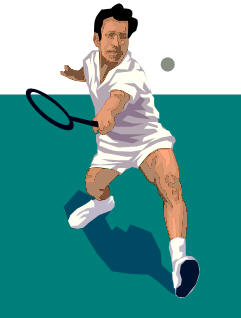 Given the subject matter, readers may wonder why I
haven't titled this essay
"A*$h@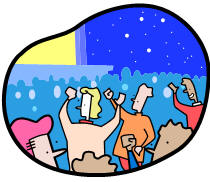 Besides, the great majority of those who stop to chat
when I'm in the field with my big lens rig aren't disruptive by intent, they're just well-meaning folks, drawn
to photographers like any other set of groupies. Sort of thrill by
association, I guess. So I'll make do with the milder donkey epithet out of respect for those
who honestly mean no harm but rather
approach photographers out of ignorance for the disruption they cause
when
the photographer happens to be doing something critical. Besides, the great majority of those who stop to chat
when I'm in the field with my big lens rig aren't disruptive by intent, they're just well-meaning folks, drawn
to photographers like any other set of groupies. Sort of thrill by
association, I guess. So I'll make do with the milder donkey epithet out of respect for those
who honestly mean no harm but rather
approach photographers out of ignorance for the disruption they cause
when
the photographer happens to be doing something critical.
And, in many cases people are genuinely looking for a
learning experience. For such people, I am only too
happy to oblige -- with perhaps
more detail than was
 wanted, as my daughter will certainly attest while
rolling her eyes in mock disgust! wanted, as my daughter will certainly attest while
rolling her eyes in mock disgust!
But, you donkeys out there,
those among you who have plagued me with your snide remarks and your nosy questions
about the cost of my gear and your untimely and persistent interruptions
despite the fact that I'm clearly in the midst of something requiring
complete concentration, interruptions that have let that
special bird swim just beyond the perfect sun angle while you are
soliciting, nay, demanding my attention -- you
know what you really are!
We've All Been There
 I'm sure every nature photographer has had similar
experiences. That once-in-a-decade spotted sandpiper (or whatever) you've
been approaching low and slow for fifteen minutes with your supertelephoto
rig has finally stopped eyeing you suspiciously, and you've put eye to viewfinder, the
perfect frame-filling composition now in view. Suddenly, you see alarm in
the bird's posture. You hardly have time to reflect that you've done
nothing to cause the bird distress when, BAM, the creature explodes to wing
and is gone.
Almost simultaneously a braying voice behind you announces, practically in
your ear, "Hey buddy, there's a heron back down the road! You should
come take a picture of it. With that camera I bet you can photograph it from a mile away! Yuk, yuk, yuk!" I'm sure every nature photographer has had similar
experiences. That once-in-a-decade spotted sandpiper (or whatever) you've
been approaching low and slow for fifteen minutes with your supertelephoto
rig has finally stopped eyeing you suspiciously, and you've put eye to viewfinder, the
perfect frame-filling composition now in view. Suddenly, you see alarm in
the bird's posture. You hardly have time to reflect that you've done
nothing to cause the bird distress when, BAM, the creature explodes to wing
and is gone.
Almost simultaneously a braying voice behind you announces, practically in
your ear, "Hey buddy, there's a heron back down the road! You should
come take a picture of it. With that camera I bet you can photograph it from a mile away! Yuk, yuk, yuk!"
That really is how he laughs. "Yuk, yuk, yuk!"
 You look longingly at the now diminishing spec that
once held your hopes for a thrilling and productive photo session and then
prepare to turn and face
this particular donkey that is today's tormentor. But first you have
to get up. Having spent the last quarter hour in a crouched position,
inching slowly forward, the
knees don't seem to want to cooperate. As you struggle
awkwardly to your feet you worry vaguely that you're making yourself
look weak and unmanly in front of what might turn out to be some young and
virile muscle bound macho specimen who's hand holding one of Canon's vintage 1200mm f5.6 telephoto behemoths, all 36 lb
of it -- a surefire way to find yourself at a psychological
disadvantage in the exchange that is certain to follow. You look longingly at the now diminishing spec that
once held your hopes for a thrilling and productive photo session and then
prepare to turn and face
this particular donkey that is today's tormentor. But first you have
to get up. Having spent the last quarter hour in a crouched position,
inching slowly forward, the
knees don't seem to want to cooperate. As you struggle
awkwardly to your feet you worry vaguely that you're making yourself
look weak and unmanly in front of what might turn out to be some young and
virile muscle bound macho specimen who's hand holding one of Canon's vintage 1200mm f5.6 telephoto behemoths, all 36 lb
of it -- a surefire way to find yourself at a psychological
disadvantage in the exchange that is certain to follow.
 On your feet at last, you look him up and down and
your worries about appearing unmanly vanish. What stands before
you is, all in all, a quite representative example of
donkeydom -- plaid shorts and a flowery shirt topped by a straw hat, all
supported on pale spindly legs, knobby knees and flip flops.
Unfortunately, none of the colors match. (Don't the wives/keepers of
these equine misfits ever monitor how their charges are released into the
wild?) Instead, you're just sad over yet another lost
opportunity and annoyed that the denouement of the whole sorry episode is
that you have to deal with this misbegotten creature. And, he's still
there, waiting expectantly for your words of
approbation at the delivery of this vital information. Which, from the
expression on his face, he apparently judges will surely save
your presumably until now worthless photographic career from oblivion. On your feet at last, you look him up and down and
your worries about appearing unmanly vanish. What stands before
you is, all in all, a quite representative example of
donkeydom -- plaid shorts and a flowery shirt topped by a straw hat, all
supported on pale spindly legs, knobby knees and flip flops.
Unfortunately, none of the colors match. (Don't the wives/keepers of
these equine misfits ever monitor how their charges are released into the
wild?) Instead, you're just sad over yet another lost
opportunity and annoyed that the denouement of the whole sorry episode is
that you have to deal with this misbegotten creature. And, he's still
there, waiting expectantly for your words of
approbation at the delivery of this vital information. Which, from the
expression on his face, he apparently judges will surely save
your presumably until now worthless photographic career from oblivion.
Sadly, he probably never even saw your intended subject.
You pause imperceptibly, and in that moment you are
deciding whether to take the Mother Teresa fork in the road of interpersonal
relational ethics and thank him
graciously for the information he has offered or do what you really want
to do and flay his donkey hide with the whip of truth. Namely, that you
already have dozens of very fine heron images in your portfolio and you
don't need an immediately deletable image of a bird situated 50 yards off the road, on a
mud flat, backlit by the Sun and framed against ragged vegetation that
cannot be eliminated from the composition.
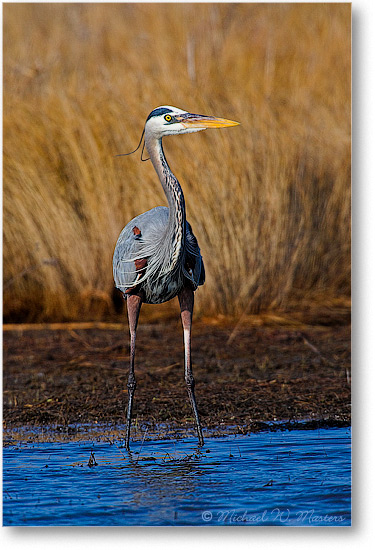 Never one to harm poor suffering beasts, you opt not
to follow the flogging fork in the interpersonal ethical road. You
avert you eyes and mutter something noncommittal about having seen the heron
on your way past the marsh where it was located. With this reply, his eyes first
take on a puzzled look and then the expectant smile slowly fades as the idea
dawns on him that you do not value the sighting he has brought. It's not
that you already knew about the heron that is bothering him. He's read from
your evasive tone of voice and your defensive body language that, having
seen it you didn't consider it worth stopping to photograph. You
didn't actually have to say this. Donkeys can infer such things
quicker than a clinically trained psychoanalyst. Never one to harm poor suffering beasts, you opt not
to follow the flogging fork in the interpersonal ethical road. You
avert you eyes and mutter something noncommittal about having seen the heron
on your way past the marsh where it was located. With this reply, his eyes first
take on a puzzled look and then the expectant smile slowly fades as the idea
dawns on him that you do not value the sighting he has brought. It's not
that you already knew about the heron that is bothering him. He's read from
your evasive tone of voice and your defensive body language that, having
seen it you didn't consider it worth stopping to photograph. You
didn't actually have to say this. Donkeys can infer such things
quicker than a clinically trained psychoanalyst.
His fading smile morphs at last into a sullen frown,
his eyes narrow to slits and he fixes you with a malevolent glare. Somehow you know what's coming
next. It's all going to be your fault. "Well," he
intones in disgust as he prepares to turn away, "I thought a real
photographer would want to know where the good stuff is." And with
that he stalks off, flip-flops smacking against the bottom of his heels.
You're left to pack up and wonder how you could have handled the interaction
in a way that satisfied this asinus intruder while keeping your own frustration at the
lost opportunity from spilling over.
And, when you'll ever see another spotted sandpiper!
Credit Where Credit's Due
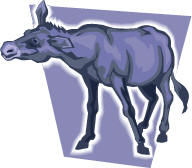 To give credit where it is due, this essay is devoted to one special
donkey whose antics, after years of being subjected to the hit-and-run
buffoonery of other donkeys in the
wild, finally prompted the writing of this testimonial to our equine
brethren. Needless to say, it was but the most recent in a long line
of many such incidents. This particular asinus was a
passenger in a car that drove by as I was loading my big lens bird rig into
my SUV at the beach collocated with my favorite refuge. I happened to
glance toward the car as it approached. The passenger window rolled
down and the vapid face of a teenager or twenty-something leaned out.
Having evidently seen the size of the big lens, the face of the occupant
contorted into an enormous toothy grin, resembling that of a jackass in full
grimace, and brayed, "CHEEEESE." With that the car was gone -- the
donkey inside no doubt hee-hawing uproariously at his oh-so-original gag -- and a resolve was
born that had begun to germinate earlier in the day. To give credit where it is due, this essay is devoted to one special
donkey whose antics, after years of being subjected to the hit-and-run
buffoonery of other donkeys in the
wild, finally prompted the writing of this testimonial to our equine
brethren. Needless to say, it was but the most recent in a long line
of many such incidents. This particular asinus was a
passenger in a car that drove by as I was loading my big lens bird rig into
my SUV at the beach collocated with my favorite refuge. I happened to
glance toward the car as it approached. The passenger window rolled
down and the vapid face of a teenager or twenty-something leaned out.
Having evidently seen the size of the big lens, the face of the occupant
contorted into an enormous toothy grin, resembling that of a jackass in full
grimace, and brayed, "CHEEEESE." With that the car was gone -- the
donkey inside no doubt hee-hawing uproariously at his oh-so-original gag -- and a resolve was
born that had begun to germinate earlier in the day.
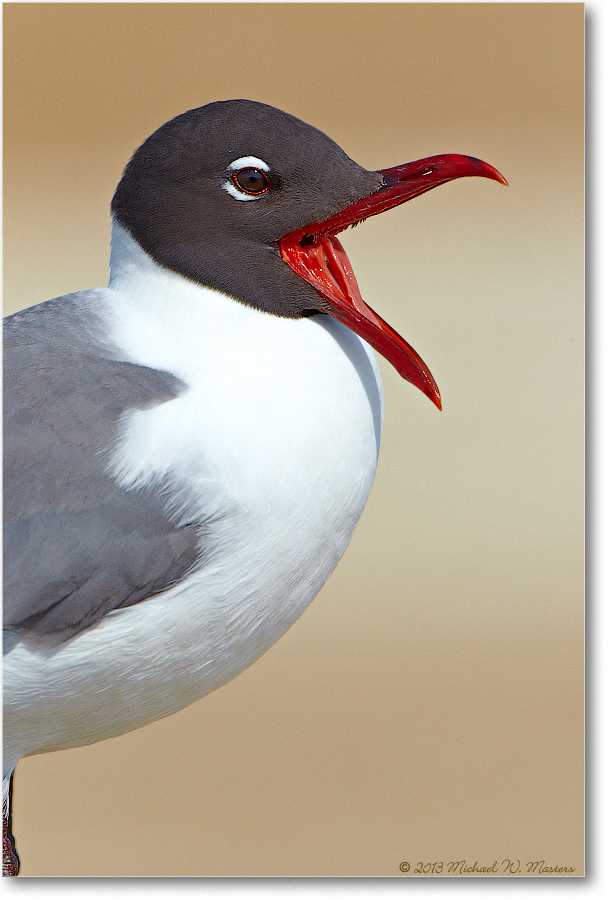 It had been a slow day and I was using my
300mm on a beanbag inside my car to photograph laughing gulls on a fence
separating lanes at the beach parking lot. Laughing gulls are my
favorites because of their beautiful wine colored bills, legs and eye
orbital rings and their high contrast black, white and gray plumage. That day,
gulls were lined up on practically every fence post. Because beach
gulls are so acclimatized to cars and people one can get very close without
bothering them if one approaches slowly. Things were going great. Then, along came a kid
with a stick. He began whacking every fence post, frightening away
each gull in turn, as if it were a game. Soon, there It had been a slow day and I was using my
300mm on a beanbag inside my car to photograph laughing gulls on a fence
separating lanes at the beach parking lot. Laughing gulls are my
favorites because of their beautiful wine colored bills, legs and eye
orbital rings and their high contrast black, white and gray plumage. That day,
gulls were lined up on practically every fence post. Because beach
gulls are so acclimatized to cars and people one can get very close without
bothering them if one approaches slowly. Things were going great. Then, along came a kid
with a stick. He began whacking every fence post, frightening away
each gull in turn, as if it were a game. Soon, there were
no gulls to photograph. A donkey in the making, if ever there was one. were
no gulls to photograph. A donkey in the making, if ever there was one.
My resolve was finalized the next day, the last of this particular trip.
The entire week had been poor; wind and rain had left me with few memorable
images to show for the effort. But that final day dawned
calm and sunny. I was out early and was happy to see plenty of
activity. I soon spotted a trio of oystercatchers on a strip of
cove beach away from the ocean. This is an ideal setting, sheltered from wind
and waves, and there's green marsh grass in the distant background, depending on angle of
view. I have made many of my best images here over the years.
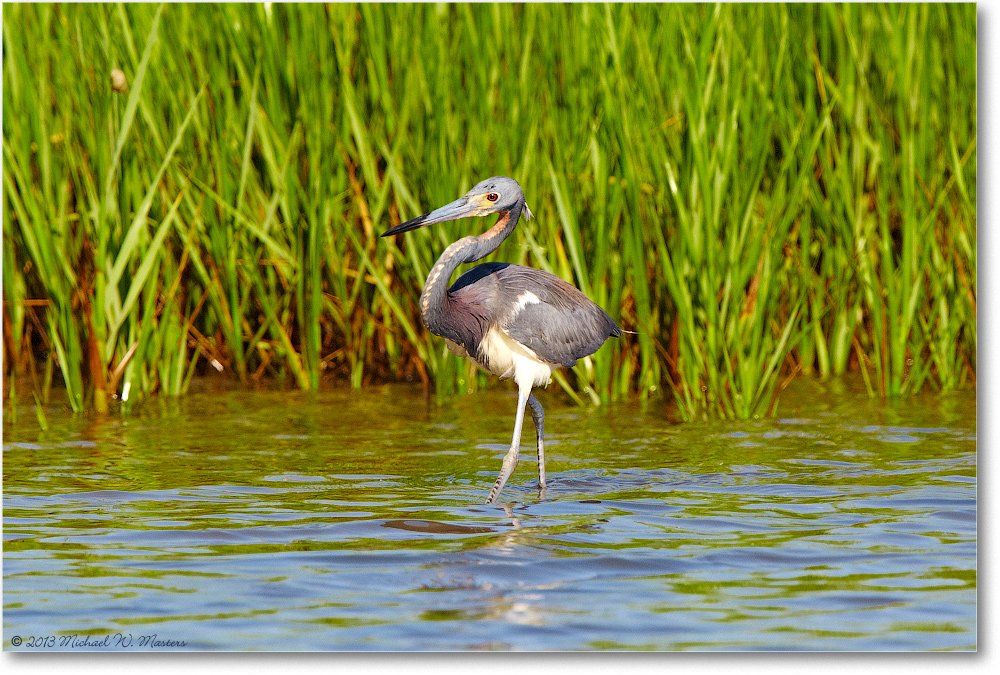 Just as I getting my rig out of my SUV I noticed a mother and young
daughter heading across the sand to the cove. I wasn't sure what they were after. Possibly it was seashells, because
mother began looking down carefully as she walked along the beach. If
so, the nearby Atlantic Ocean beach would have offered better prospects by
far. This wasn't good, but the beach was fairly long, and if they stayed
away from the oystercatchers I might still be able to approach the OCs.
I finished putting the rig together and started toward the beach.
Could mother and daughter, oystercatchers and I coexist? Sadly, the
answer was no. Just as I getting my rig out of my SUV I noticed a mother and young
daughter heading across the sand to the cove. I wasn't sure what they were after. Possibly it was seashells, because
mother began looking down carefully as she walked along the beach. If
so, the nearby Atlantic Ocean beach would have offered better prospects by
far. This wasn't good, but the beach was fairly long, and if they stayed
away from the oystercatchers I might still be able to approach the OCs.
I finished putting the rig together and started toward the beach.
Could mother and daughter, oystercatchers and I coexist? Sadly, the
answer was no.
Soon they were walking directly toward the oystercatchers, which
were by now distinctly alarmed. The OCs began scurrying away, running
rather than flying, thankfully. My chances were
plummeting by the moment -- but I kept going because, well, they hadn't
flown yet and oystercatchers are among the most striking of shorebirds.
And then it happened. The daughter
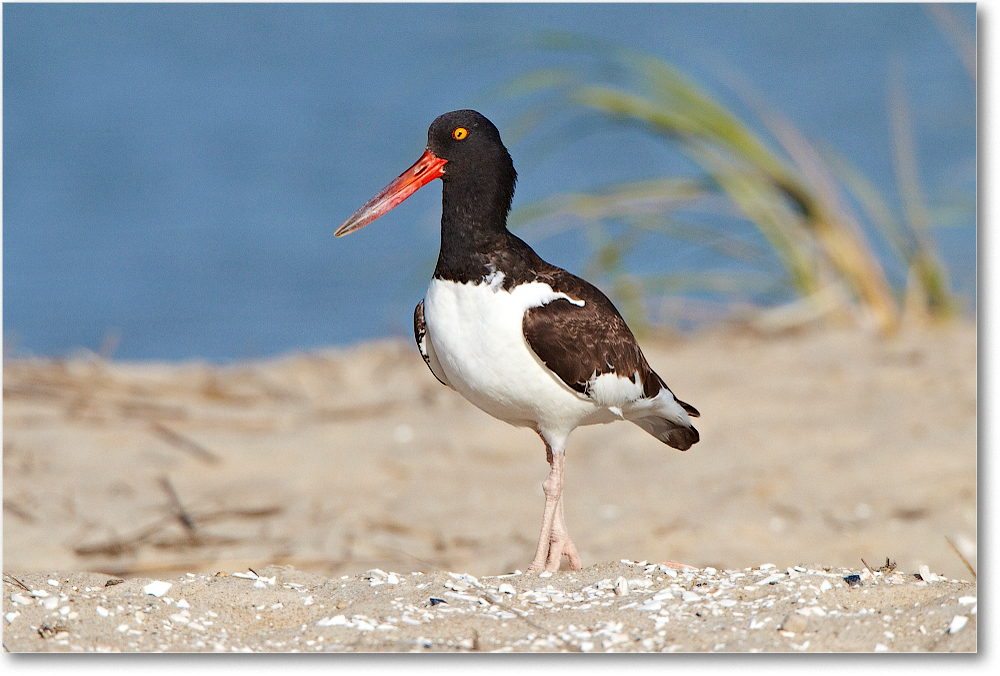 broke into a run directly at the
OCs, waving her arms wildly, clearly intending to flush them. Another
child playing a game with wildlife -- and the effect was the same. The oystercatchers were
gone for good. broke into a run directly at the
OCs, waving her arms wildly, clearly intending to flush them. Another
child playing a game with wildlife -- and the effect was the same. The oystercatchers were
gone for good.
Perhaps the saddest part of this situation was not my lost photographic
opportunity -- although that stung, because it was to be the best setting I
would encounter
all day -- but rather the fact that the child's mother paid not the
slightest attention to her daughter's inappropriate behavior toward wildlife. And, I might add, no wonder oystercatchers are among the
most skittish of shorebirds -- at least at this refuge.
So you see how it is, dear reader, that I came to write this essay.
My First Donkey Encounter
My first
ever encounter with a donkey, an individual who surely qualified for the more
biting appellation
that shall not be mentioned in print, came early in my days of bird
photography, at my favorite photo location, a place I call Egret Alley.
It is a pool located along a channel at one of the east coast refuges. The
configuration is such that a channel connects the pool to a managed
impoundment for waterfowl, waders, shorebirds, etc. There is also a culvert
that links the pool, eventually via and a long,
meandering stream, to the Atlantic Ocean.
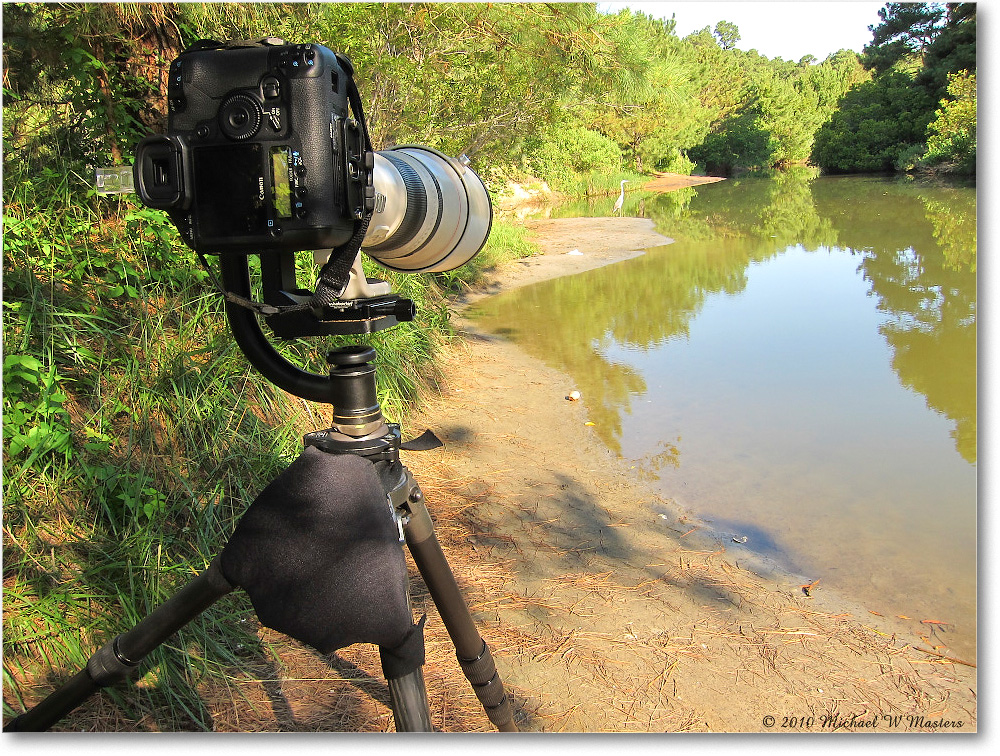 Flow thorough the culvert is managed by refuge staff
so that unless there is excess rainwater to be drained off the pool is
usually still. There is always a supply of fresh fish from the
impoundment, and there is also a small sandbar at the pool, which makes for an ideal fishing habitat for
herons and, especially, egrets. Hence, the name, Egret Alley. Flow thorough the culvert is managed by refuge staff
so that unless there is excess rainwater to be drained off the pool is
usually still. There is always a supply of fresh fish from the
impoundment, and there is also a small sandbar at the pool, which makes for an ideal fishing habitat for
herons and, especially, egrets. Hence, the name, Egret Alley.
One sunny summer morning, with the Sun in excellent
position for frontal lighting and with blue sky reflecting off
the water, I found a tolerant snowy egret that allowed me
to gain access down the bank and onto the sand bar without flushing. I
was close enough for what I hoped would be outstanding frame filling images
with the only "long lens" I could afford at the time, my
tripod-mounted 200mm APO! This was in the days prior to image
stabilization, and even with a 200mm lens and teleconverer I always used a
tripod.
 Just as I put eye to viewfinder, with bird totally
comfortable with my presence, there was a huge SPLASH! The snowy was
gone in a heartbeat, winging away down the channel. I looked out to see most of the pool covered with an enormous fishnet.
Dumbfounded, I scanned the top of the bank -- to find a most unwelcome equus
asinus standing there, an amused, mocking expression on his face.
"Don't worry," he brayed smugly. "He'll come back." And he ambled away,
hooves clicking and tail switching flies away. Just as I put eye to viewfinder, with bird totally
comfortable with my presence, there was a huge SPLASH! The snowy was
gone in a heartbeat, winging away down the channel. I looked out to see most of the pool covered with an enormous fishnet.
Dumbfounded, I scanned the top of the bank -- to find a most unwelcome equus
asinus standing there, an amused, mocking expression on his face.
"Don't worry," he brayed smugly. "He'll come back." And he ambled away,
hooves clicking and tail switching flies away.
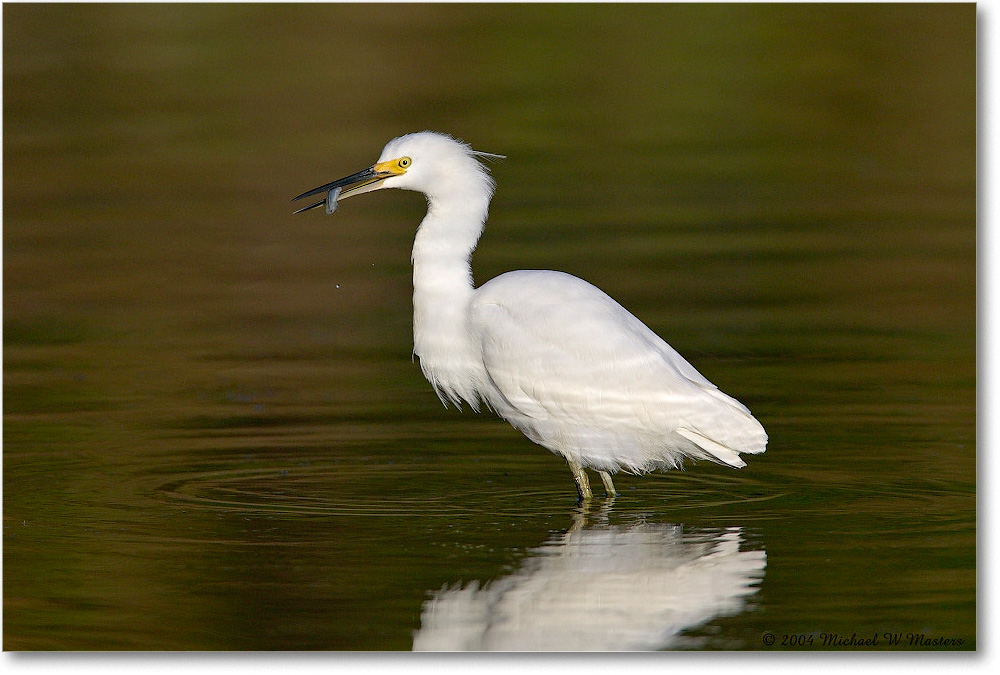 Of course, the snowy never did return. But it
didn't matter because the fishnet now covered the best part of the fishing
area, ensuring that no bird would fish there anyway. I have to admit,
I was sorely tempted to take that fish net and toss it onto the bank.
But, I was none too sure how the refuge staff would view such an action if
the hee-haw reported it. In the end, I could do no more than retreat to my vehicle to reflect on the
fact that, like kudzu, fishermen are an invasive species and will drive out
birds and photographers wherever there are fish to be found. Of course, the snowy never did return. But it
didn't matter because the fishnet now covered the best part of the fishing
area, ensuring that no bird would fish there anyway. I have to admit,
I was sorely tempted to take that fish net and toss it onto the bank.
But, I was none too sure how the refuge staff would view such an action if
the hee-haw reported it. In the end, I could do no more than retreat to my vehicle to reflect on the
fact that, like kudzu, fishermen are an invasive species and will drive out
birds and photographers wherever there are fish to be found.
After mulling over this newly discovered and sad reality of
life, I began
searching elsewhere for another egret.
What Donkeys Do
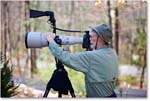 Over the years I've had many people come up to me in
the field and
ask questions. The most common ones are, how much does that big lens
rig cost and, how far can you see with it.
If the latter question is asked, and if I'm not doing much I let them take a look
through the viewfinder. Most people are vaguely disappointed once
they've had a view, especially if the subject is distant. Even a 600mm
with a 2X gives only the equivalent view of 24X magnification on a full
frame camera, far short of
the view offered by the 60X spotting scopes that birders routinely use. Over the years I've had many people come up to me in
the field and
ask questions. The most common ones are, how much does that big lens
rig cost and, how far can you see with it.
If the latter question is asked, and if I'm not doing much I let them take a look
through the viewfinder. Most people are vaguely disappointed once
they've had a view, especially if the subject is distant. Even a 600mm
with a 2X gives only the equivalent view of 24X magnification on a full
frame camera, far short of
the view offered by the 60X spotting scopes that birders routinely use.
 I try to be patient with people who ask about money,
but I'm just naturally reticent when it comes to revealing the cost of a
bird capable rig to a total stranger. Anyone who has priced a Canon or
Nikon 500mm, 600mm or 800mm lens, a pro digital body, a carbon fiber tripod
and a gimbal head, along with the requisite flash, flash arm and external battery for
flash fill, knows how much these rigs can cost. So I try to give a
noncommittal reply (hopefully with a smile), something like, "More than I
can afford!" or maybe I answer a question with a question. "How much
do you think?" Inevitably people guess radically too low. "A
grand at least!" "Yeah, that's about right," I reply
with a deadpan voice, and the
problem is solved. I try to be patient with people who ask about money,
but I'm just naturally reticent when it comes to revealing the cost of a
bird capable rig to a total stranger. Anyone who has priced a Canon or
Nikon 500mm, 600mm or 800mm lens, a pro digital body, a carbon fiber tripod
and a gimbal head, along with the requisite flash, flash arm and external battery for
flash fill, knows how much these rigs can cost. So I try to give a
noncommittal reply (hopefully with a smile), something like, "More than I
can afford!" or maybe I answer a question with a question. "How much
do you think?" Inevitably people guess radically too low. "A
grand at least!" "Yeah, that's about right," I reply
with a deadpan voice, and the
problem is solved.
Perhaps the next most common interruption is from
people asking for bird identifications -- and these I almost always try to
make time for. For the places I go, I usually have the right answer
and I do like to help out those who are interested enough to want to know a
bird's ID. However, I have to admit that one of my most embarrassing
moments came in a somewhat related situation.
A Ruddy June
 It was a June afternoon and I happened on a male and
two female ruddy ducks in summer breeding plumage at a managed pool at
one of my favorite refuges, a place my family and I have been making an
annual June Father's Day pilgrimage to for 20 years. It was the only
time I had ever seen ruddys in summer plumage, so I was frantic not to miss
this opportunity. I parked on the shoulder and set up as quickly and as unobtrusively
as possible. It was a June afternoon and I happened on a male and
two female ruddy ducks in summer breeding plumage at a managed pool at
one of my favorite refuges, a place my family and I have been making an
annual June Father's Day pilgrimage to for 20 years. It was the only
time I had ever seen ruddys in summer plumage, so I was frantic not to miss
this opportunity. I parked on the shoulder and set up as quickly and as unobtrusively
as possible.
The ruddys were some distance off shore, cruising
back and forth, but well aware of my presence. The sun angle was
forty-five degrees or so off-axis, which meant that getting a good image was
a matter of careful timing -- waiting for the right body posture and head
turn. I was on the shoulder of a beach access road, so there was constant
traffic behind me, which meant that at any time this beautiful little trio
might be spooked, take to wing and disappear. It was a nerve wracking
experience.
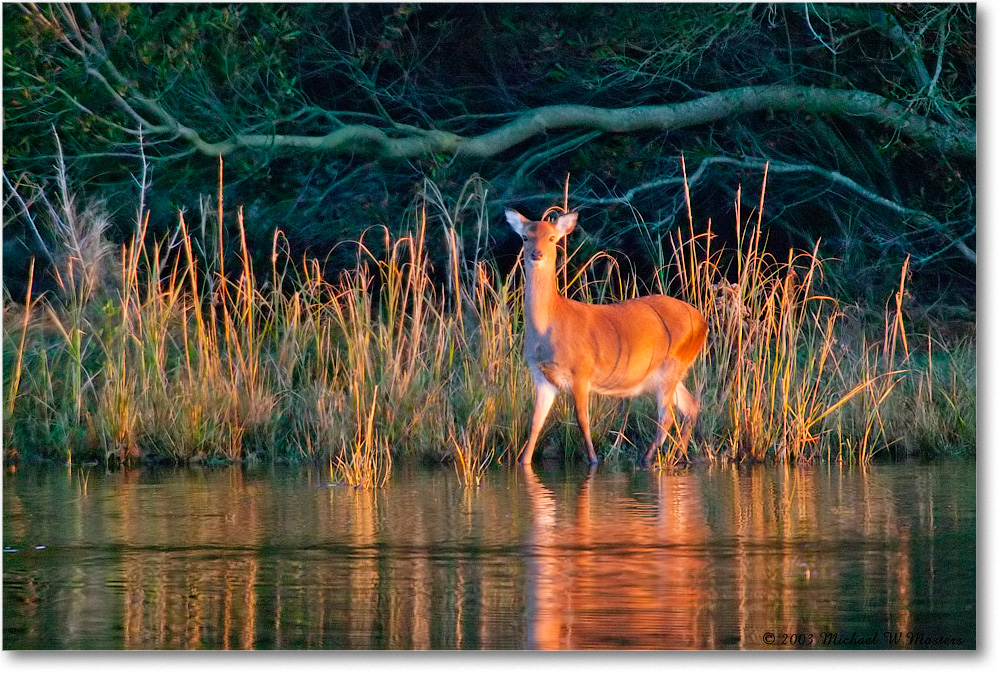 They
had made a pass down sun and were returning when I heard a car stop behind
me and a door close. The ruddys reacted by bending their path outward
from the shore, and I groaned inwardly but kept eye to viewfinder.
They were slowly increasing their distance from shore and getting smaller in
frame with each passing second, but I continued pressing the shutter release
each time the male, largest of the three, looked my way and the sun glinted
in his eye. Then, right behind me someone asked, "Hey, have you ever
seen ruddy ducks in breeding plumage like that here in June?" They
had made a pass down sun and were returning when I heard a car stop behind
me and a door close. The ruddys reacted by bending their path outward
from the shore, and I groaned inwardly but kept eye to viewfinder.
They were slowly increasing their distance from shore and getting smaller in
frame with each passing second, but I continued pressing the shutter release
each time the male, largest of the three, looked my way and the sun glinted
in his eye. Then, right behind me someone asked, "Hey, have you ever
seen ruddy ducks in breeding plumage like that here in June?"
 Now, I'll have to admit that
at this point I was no
longer a civilized being, governed by the rules of polite society.
Even though this guy sounded like a really decent fellow and was obviously
educated enough in bird lore to know that ruddys in summer dress were out of
season at this time and at this location, none of that mattered. Some atavistic part of my brain had
taken over and all I could think of was capturing as many images of that beautiful
male ruddy duck before it got too far away to be large enough in
frame to be interesting. Now, I'll have to admit that
at this point I was no
longer a civilized being, governed by the rules of polite society.
Even though this guy sounded like a really decent fellow and was obviously
educated enough in bird lore to know that ruddys in summer dress were out of
season at this time and at this location, none of that mattered. Some atavistic part of my brain had
taken over and all I could think of was capturing as many images of that beautiful
male ruddy duck before it got too far away to be large enough in
frame to be interesting.
But the donkey, be he ever so fine a fellow,
nonetheless had to be dealt with.
What to do? How to end all conversation immediately without resort to
overt rudeness or more extreme measures -- which, of course, would require
that I abandon the viewfinder, however momentarily? Out of the
depths of the necessity of the situation, and almost without conscious
thought, the answer issued forth unbidden from my lips.
"I've never been here in June."
 Behind me there was silence. I kept shooting.
Soon there came the sounds of a door closing, engine engaging, gravel
crunching and car pulling away. But this barely registered. I
made image after image as the ruddys gently swam in an avoiding arc around
my position and continued away, not to return. I chimped through the
files and realized with satisfaction that, although with the off-axis sun
angle some extra effort would be required in post processing there were
probably some good results from this miraculous ruddy apparition. Behind me there was silence. I kept shooting.
Soon there came the sounds of a door closing, engine engaging, gravel
crunching and car pulling away. But this barely registered. I
made image after image as the ruddys gently swam in an avoiding arc around
my position and continued away, not to return. I chimped through the
files and realized with satisfaction that, although with the off-axis sun
angle some extra effort would be required in post processing there were
probably some good results from this miraculous ruddy apparition.
Then, a thought began to nag at me. I really had been rude to that guy, donkey though he may have been, and intrusion
on a once-in-20-years photo opportunity though he may have posed. And, I
had blurted out a "little white lie" too -- something that didn't sit
well
in retrospect, even if it had come in the expediency of the moment and as a means of
insuring that I could harvest a few more precious images of those glorious
ruddys.
Of course, there was the fact that in a perfect world he should have know
better than to interrupt someone with obvious serious intent as evidenced by
the big lens rig. But still, my reply now felt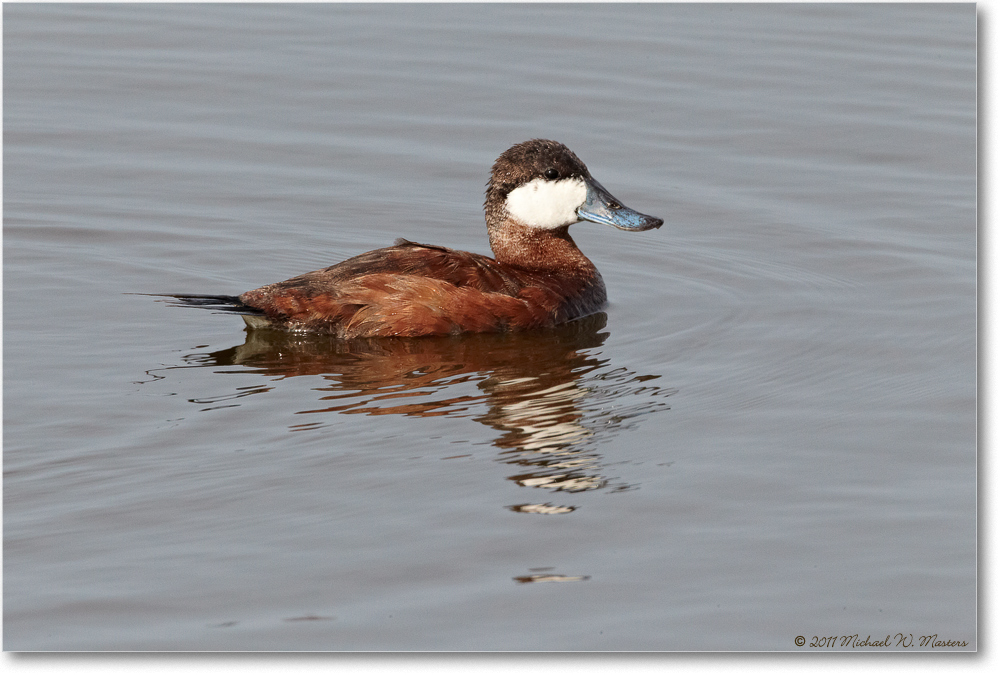 wrong, and I lamented
that I had let irritation guide the outcome. It would have taken only
a few seconds more to say something like, "I've been coming here 20 years
and this is the first time I've seen ruddys in breeding plumage in June." wrong, and I lamented
that I had let irritation guide the outcome. It would have taken only
a few seconds more to say something like, "I've been coming here 20 years
and this is the first time I've seen ruddys in breeding plumage in June."
I was happy with the ruddy images but it definitely
was not my finest hour in interpersonal relationships. I had the
distinct feeling that while I was not a donkey I might well deserve my own
place somewhere in the barnyard. From this uncomfortable feeling came a resolve
to grit my teeth and meet each request with at least a modicum of
politeness, no matter the cost in missed images.
Blasting the Ducks
 Perhaps the most egregious example of donkeydom I
have ever run across happened several years ago, once again at my favorite
refuge. This time, although the encounter resulted in a lost
opportunity for me the more important point has to do with photographer
interaction with wildlife. My observation is that most nature
photographers are very respectful of nature. But we all know of
exceptions -- and we also all know that a few bad examples can make life
miserable for the rest of us. All it takes is one smartphone video
posted to Internet or one negative thread on a birding forum or one incident
reported to authorities at a park or refuge to compromise the prospects for
all of us. Perhaps the most egregious example of donkeydom I
have ever run across happened several years ago, once again at my favorite
refuge. This time, although the encounter resulted in a lost
opportunity for me the more important point has to do with photographer
interaction with wildlife. My observation is that most nature
photographers are very respectful of nature. But we all know of
exceptions -- and we also all know that a few bad examples can make life
miserable for the rest of us. All it takes is one smartphone video
posted to Internet or one negative thread on a birding forum or one incident
reported to authorities at a park or refuge to compromise the prospects for
all of us.
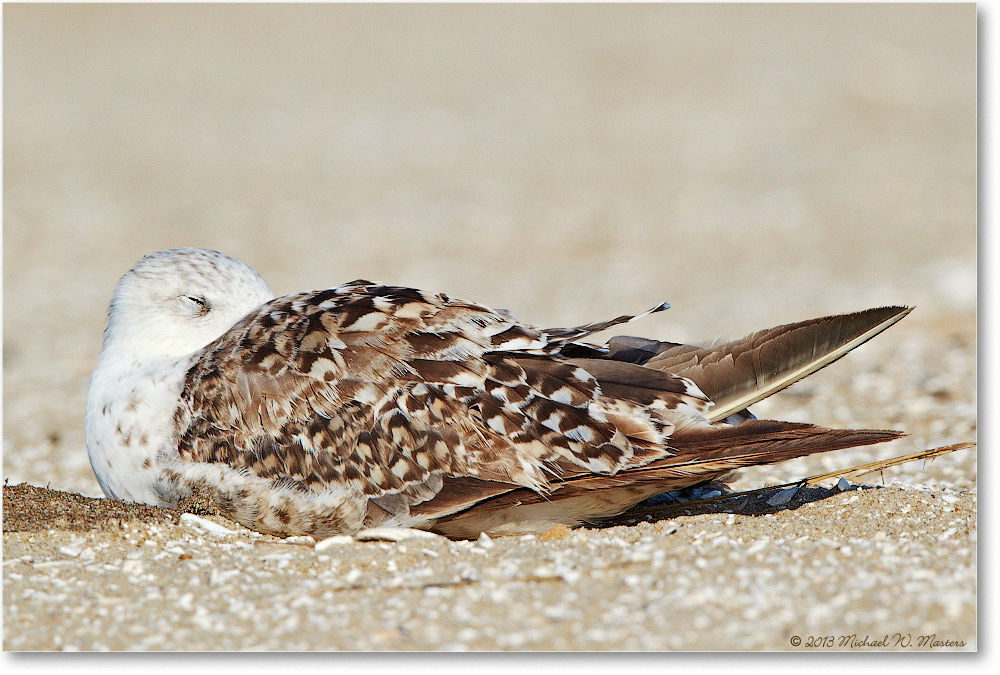 I know that personally I try to approach all wildlife
as slowly and as quietly as possible. And, of course, there is no
substitute for knowing one's subjects. For me, wildlife is almost
exclusively birds, and in just about any situation one can usually tell by
the behavior of the subject whether one can approach and how near one can
get. In the early years I inevitably tried to get too close too soon.
Now, I move very slowly, keeping the camera between my face and the subject,
and using any obstacle as a temporary blind to move a few steps closer
whenever possible. Of course, some birds are wary no matter what, but
more often than not I can get as close as I need to. Sometimes the problem becomes one of the bird
falling asleep when what I really want is a nice alert portrait image!
I'm sure other long time bird photographers could relate similar stories -- it just
takes patience and understanding of the subject. I know that personally I try to approach all wildlife
as slowly and as quietly as possible. And, of course, there is no
substitute for knowing one's subjects. For me, wildlife is almost
exclusively birds, and in just about any situation one can usually tell by
the behavior of the subject whether one can approach and how near one can
get. In the early years I inevitably tried to get too close too soon.
Now, I move very slowly, keeping the camera between my face and the subject,
and using any obstacle as a temporary blind to move a few steps closer
whenever possible. Of course, some birds are wary no matter what, but
more often than not I can get as close as I need to. Sometimes the problem becomes one of the bird
falling asleep when what I really want is a nice alert portrait image!
I'm sure other long time bird photographers could relate similar stories -- it just
takes patience and understanding of the subject.
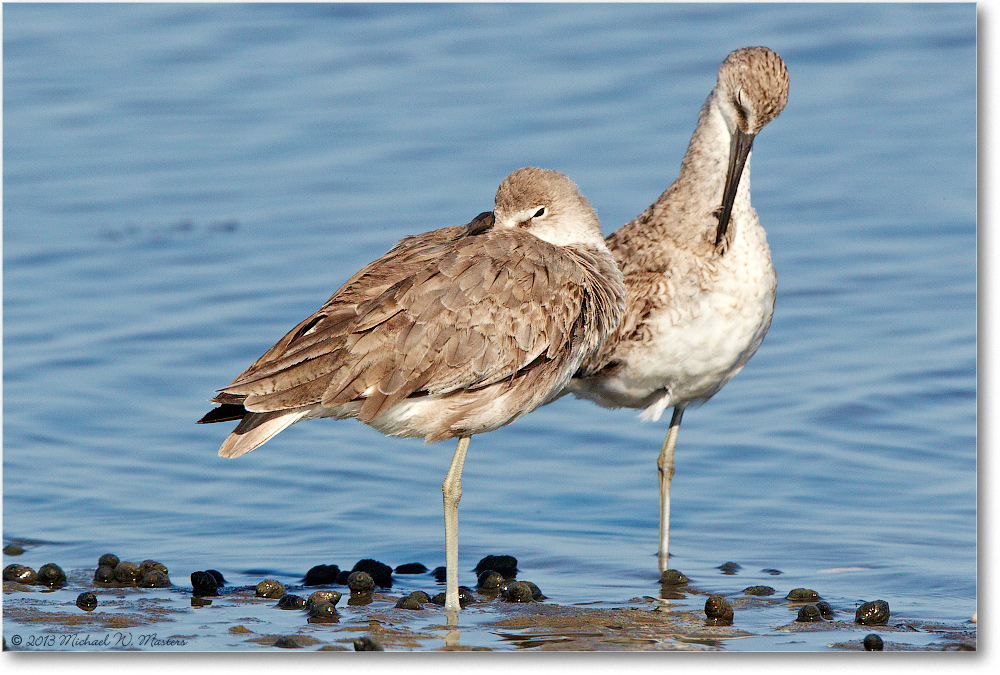 In this particular instance, I had spotted a pair of
mated mallards swimming in a channel alongside a busy beach access road.
In fact, the channel was next to a parking lot which was across the street
from the beach visitor center, so there were plenty of parked cars to serve
as blinds. Mallards at this refuge are notoriously flighty, and being
situated in a heavily trafficked area I knew that the slightest disturbance
would flush them. So I parked some distance away and set up my
big lens rig. I could have gone with a shorter lens hand-held
but I opted for the big rig for greater standoff, hoping to minimize the
likelihood of flushing them. As it turned out, I needn't have
bothered. In this particular instance, I had spotted a pair of
mated mallards swimming in a channel alongside a busy beach access road.
In fact, the channel was next to a parking lot which was across the street
from the beach visitor center, so there were plenty of parked cars to serve
as blinds. Mallards at this refuge are notoriously flighty, and being
situated in a heavily trafficked area I knew that the slightest disturbance
would flush them. So I parked some distance away and set up my
big lens rig. I could have gone with a shorter lens hand-held
but I opted for the big rig for greater standoff, hoping to minimize the
likelihood of flushing them. As it turned out, I needn't have
bothered.
I moved slowly from car to car, carrying the long
lens and tripod and taking care to remain hidden from the mallards. At
last I was ready to place the tripod ahead of me around the last car and
ease behind it. At that moment, a most reprehensible donkey appeared
from nowhere, running literally at a sprint and shouting with glee as he
came, holding a camera to his eye with what appeared to be a 70-200mm zoom
attached and blasting away at full high speed continuous shutter release.
Whack-whack-whack-whack-whack. He slid feet first down the shallow
bank of the channel, a mere three feet or so to 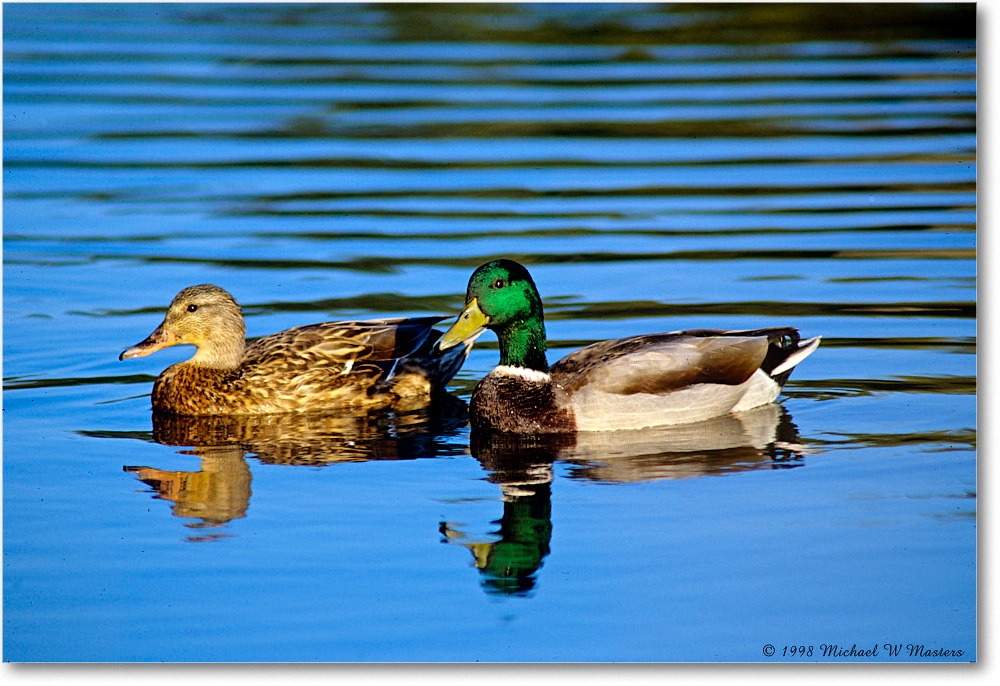 waters edge, like a runner
sliding into second base, continuing to blast away all the way to the
bottom. Needless to say, by the time he reached water's edge the panicked mallards had exploded into the air, wings beating
wildly. waters edge, like a runner
sliding into second base, continuing to blast away all the way to the
bottom. Needless to say, by the time he reached water's edge the panicked mallards had exploded into the air, wings beating
wildly.
I watched this disturbing spectacle with a mix of
disbelief, horror, disgust, disappointment and a sense of uncertainty as to how to react.
Was this guy really that stupid? Should I say something to him?
If I did, how would he react? After all, I didn't wear an official hat
there. Should I report it to the park rangers? The beach visitor
center was just across the street. And then, there was the fact that
this individual's ancestral beginnings were clearly different than mine.
What exactly would be the outcome of a cross-cultural encounter under such
circumstances? While I pondered these existential questions, he
climbed up from second base and walked away without so much as a glance in
my direction,
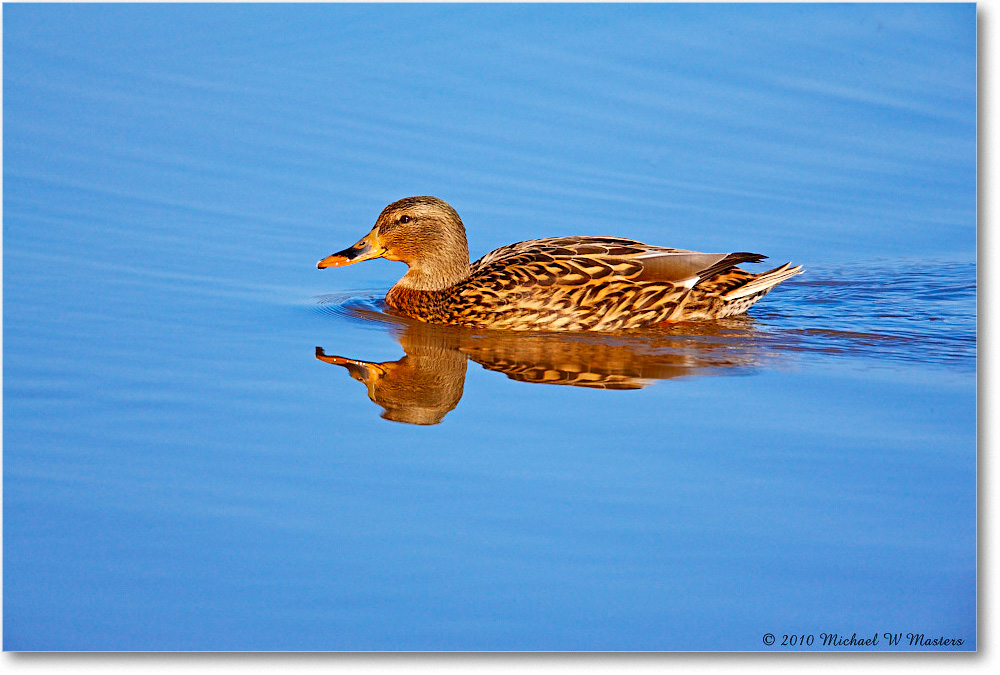 despite big lens and tripod as well as my person being clearly
visible from his vantage. despite big lens and tripod as well as my person being clearly
visible from his vantage.
To this day I do not know what I should have done.
Nor do I particularly mourn the lost imaging opportunity -- even though
mallards are difficult at that refuge, and even though I had spent considerable time
working my way into a favorable position. What sticks with me
is the panicked flight of those mallards and the casual and unconcerned,
almost nonchalant way this particular individual sauntered away once they
were gone.
Shoe on Other Foot
I've always been an amateur, a hobbyist, with no
desire to become a "pro." But, in earlier years, after I could afford
a big lens, and as I was starting to actually develop some skills (big
acknowledgement to Arthur Morris' book, The Art of Bird Photography),
I couldn't help but become conscious of others around me with comparable
equipment and wonder about their situations. Which ones were amateurs
like me and which ones were pros?
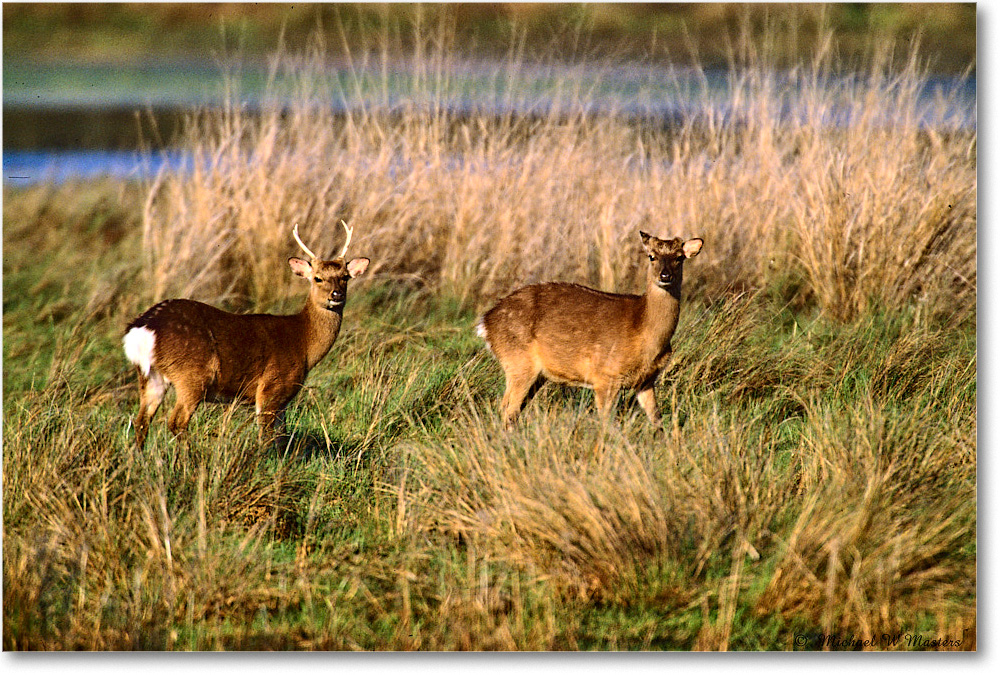 Then, one day as my wife and I were driving the loop
at our favorite refuge we spotted a very expensive SUV pulled off
on the shoulder ahead of us. I slowed down and took in the scene.
A rather distinguished and experienced looking gentleman was extracting a
big lens rig from the back of his SUV and setting up. I had already
looked over the marshy pool we were traversing and decided there wasn't
anything I wanted to spend time on, but this fellow looked the part so maybe
he knew something I didn't.
His gear was top of the line, compared to my photo vest his looked like a
dinner jacket, and his
SUV was, well, I wish I could have afforded it. In a sudden flash of
realization, it came to me. He was a pro! Then, one day as my wife and I were driving the loop
at our favorite refuge we spotted a very expensive SUV pulled off
on the shoulder ahead of us. I slowed down and took in the scene.
A rather distinguished and experienced looking gentleman was extracting a
big lens rig from the back of his SUV and setting up. I had already
looked over the marshy pool we were traversing and decided there wasn't
anything I wanted to spend time on, but this fellow looked the part so maybe
he knew something I didn't.
His gear was top of the line, compared to my photo vest his looked like a
dinner jacket, and his
SUV was, well, I wish I could have afforded it. In a sudden flash of
realization, it came to me. He was a pro!
In that moment, reason departed. Like groupies
everywhere, I just had to be a part of his world! As we came parallel,
I powered down the window on my wife's side, leaned across her and, as the
gentleman looked up from his big lens, I blurted out, "Have you seen
anything good to shoot?"
The look he have me in that moment can only be
described as one cold enough to turn every living creature in the refuge to
stone. In a flash of horrified realization, I saw my action for what
it was. I had unwittingly become what I decried in others!
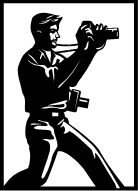
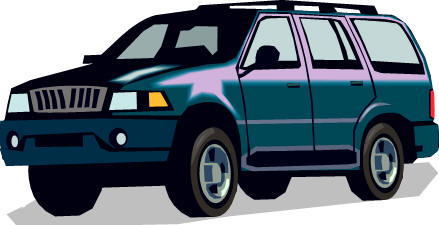 I drove away as fast as circumstance permitted, face
burning with shame, and found a vantage at another pool as far as possible
within the confines of the refuge from the pro. Or, at least that's
what I took him for. Only an authentic pro could transfix you with that kind of
withering glare. Amateurs were peasants compared to such exalted
nobility. I drove away as fast as circumstance permitted, face
burning with shame, and found a vantage at another pool as far as possible
within the confines of the refuge from the pro. Or, at least that's
what I took him for. Only an authentic pro could transfix you with that kind of
withering glare. Amateurs were peasants compared to such exalted
nobility.
Eventually I found a cooperative great egret and set
up my own big lens rig. By now it was late afternoon and the light was
getting good. The only negative was that the sun was at an oblique
angle to the pool's bank so I had to set up a good distance from the egret
to get full frontal sun on the bird. This necessitated use of a teleconverter, but I was (and am) used to shooting with teleconverters when
needed so I settled in to take advantage of the situation.
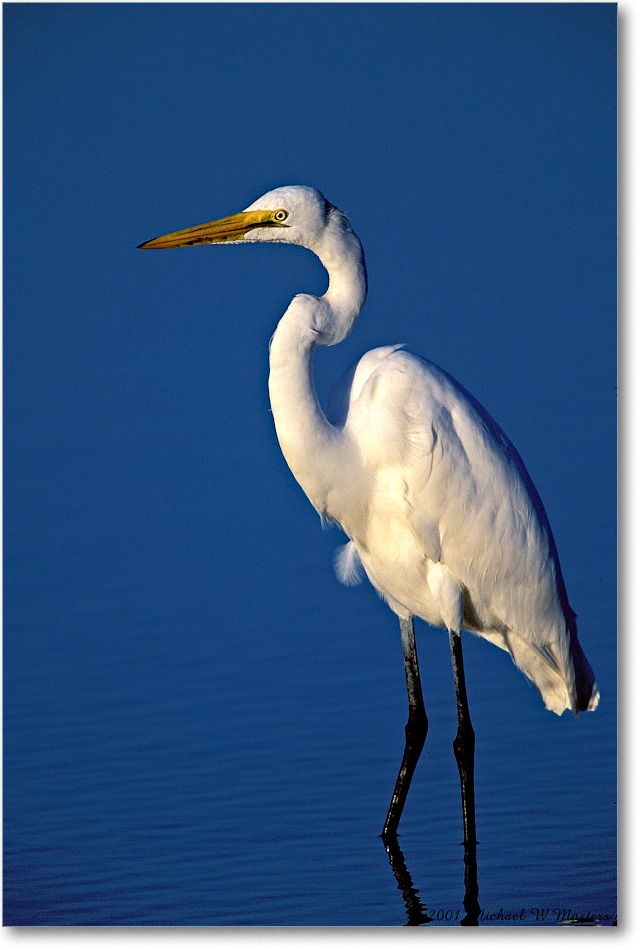 Soon thereafter, to my dismay the very expensive SUV
pulled onto the shoulder in front of my location and directly across from the great egret.
At first I thought the pro had come for me, to tell me what a rank amateur I
was and how I should never speak to a real pro again, unless I had something
meaningful to say. Like name, rank and dog tag number or phone number
of next of kin. Then, I noticed that he was setting up his rig at
the location where he had parked. Hmm, I thought. That will
never do. From that location the egret is side-lit.
He's not going to get much there. Could it be that I've made a better
choice than a pro? Soon thereafter, to my dismay the very expensive SUV
pulled onto the shoulder in front of my location and directly across from the great egret.
At first I thought the pro had come for me, to tell me what a rank amateur I
was and how I should never speak to a real pro again, unless I had something
meaningful to say. Like name, rank and dog tag number or phone number
of next of kin. Then, I noticed that he was setting up his rig at
the location where he had parked. Hmm, I thought. That will
never do. From that location the egret is side-lit.
He's not going to get much there. Could it be that I've made a better
choice than a pro?
I soon dismissed the thought, put eye to
viewfinder again and clicked away busily. Some indefinite time
thereafter a voice caused me to look up. "It seems you've chosen the
best location to take advantage of the sun angle." It was the pro, and
he wasn't frowning! Amazingly, he chatted photography for a few minutes,
left me his business card (he really was a pro) and departed. The
final courtesy was that he did not intrude on my location, which I greatly
appreciated as good subjects weren't plentiful that afternoon.
As I reflected on the incident afterward I realized
that not everyone who behaves like a photo groupie is given an opportunity for
redemption. I was most appreciative of mine.
Learning to Live With Donkeys, Bless Their Pea-Pickin' Hearts!
Over the years I've had many people come up to me and
ask questions. From this, I've learned to accept -- grudgingly
-- and live with the fact that not everyone understands the intensity and
concentration with which I pursue bird photography in the field. When
people see a big lens they're just naturally drawn to it, and in most cases
it is an opportunity to educate and spread good will toward nature
photographers rather than to discourage them with a gruff dismissal.
 The same thing is true with astronomical telescopes,
by the way. When I'm out with a scope I'm inevitably asked similar
questions. "How much did that cost?" "How far can you see with
it?" etc. Of course, in the case of the second question it's a little
trickier with a telescope. I'm tempted to reply, "Well, how far do you
want to see?" The question is so earthbound in its thought
process. If I'm feeling particularly curmudgeonly I'll reply
offhandedly, "Oh, millions and millions of light-years." The same thing is true with astronomical telescopes,
by the way. When I'm out with a scope I'm inevitably asked similar
questions. "How much did that cost?" "How far can you see with
it?" etc. Of course, in the case of the second question it's a little
trickier with a telescope. I'm tempted to reply, "Well, how far do you
want to see?" The question is so earthbound in its thought
process. If I'm feeling particularly curmudgeonly I'll reply
offhandedly, "Oh, millions and millions of light-years."
But a better answer would be to explain that in
astronomy "how far" isn't usually the important question. We're
limited by how much light our telescopes can gather and how bright, or
faint, if you prefer, our target object is. So a bright object a long
distance away can be just as visible as a dim object nearby. Of
course, this kind of generalization, while true, satisfies no one, and
pretty soon someone pipes up with, "What's the fartherest away thing you
can see?"
 I
really should memorize a standard set of facts for such situations, but I'm
a first principles and big picture (pardon the obvious pun) kind of guy, so
the answer I've settled on is this. At an apparent magnitude of 12.9,
quasi-stellar radio source 3C 273 in the constellation Virgo is the
brightest quasar in our skies. Its red shift of 0.158 places it at
two billion light-years from us. At that magnitude 3C 273
should be
just within reach of a quality 4-inch refractor on a good night --
although one would struggle to find it against faint field stars, making it
a more suitable, albeit wholly uninteresting object ("quasi-stellar" means
it looks just like every star up there!) for larger scopes. I
really should memorize a standard set of facts for such situations, but I'm
a first principles and big picture (pardon the obvious pun) kind of guy, so
the answer I've settled on is this. At an apparent magnitude of 12.9,
quasi-stellar radio source 3C 273 in the constellation Virgo is the
brightest quasar in our skies. Its red shift of 0.158 places it at
two billion light-years from us. At that magnitude 3C 273
should be
just within reach of a quality 4-inch refractor on a good night --
although one would struggle to find it against faint field stars, making it
a more suitable, albeit wholly uninteresting object ("quasi-stellar" means
it looks just like every star up there!) for larger scopes.
However non-relevant it may be to enjoying an evening
of stargazing, two billion light-years seems to satisfy most questioners!
But, whether astronomy or photography the message is
this. Most individuals who approach someone with expensive gear does
so with a set of implicit expectations. They assume the person with the
gear a) knows what they are doing, and b) will be willing to share what they
know with some degree of polite tolerance. And rightly or wrongly,
they will form an opinion of all photographers based on how they are treated
during that interaction.
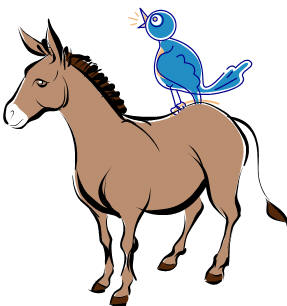 One could say that it doesn't matter what most people
think of us -- and one might even be right, most of the time. But,
inevitably there will be instances when someone is put off who could have
become a helpful friend to our community. Or someone is turned off to
nature who might have become an enthusiast. And, underneath it all,
for some of us there is a more personal question: What kind of person
do we want to be, one who shuts out others or one who welcomes the
opportunity to share with others a little of our knowledge about the
activity that brings us so much fulfillment. One could say that it doesn't matter what most people
think of us -- and one might even be right, most of the time. But,
inevitably there will be instances when someone is put off who could have
become a helpful friend to our community. Or someone is turned off to
nature who might have become an enthusiast. And, underneath it all,
for some of us there is a more personal question: What kind of person
do we want to be, one who shuts out others or one who welcomes the
opportunity to share with others a little of our knowledge about the
activity that brings us so much fulfillment.
So, the conclusion I have reached is this. If
birds can tolerate my presence in their world I can tolerate donkeys'
presence in mine!
© 2013 Michael W. Masters
Return to top
|


